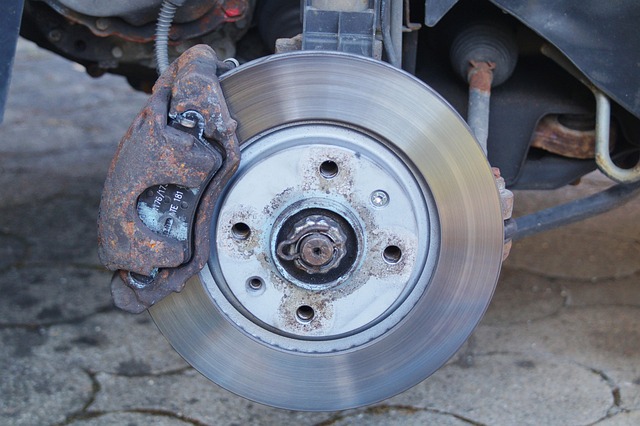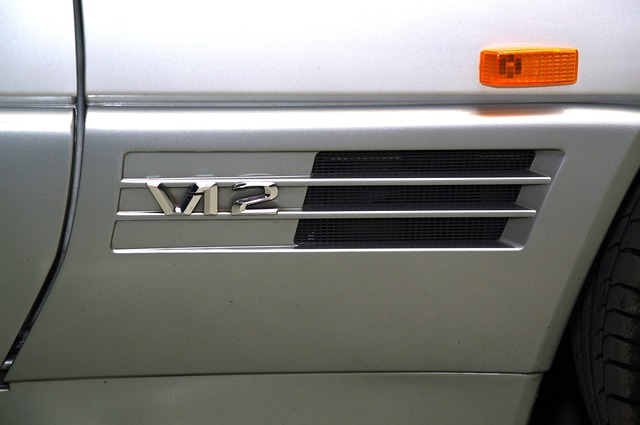Semi-truck braking systems face challenges related to weight and diverse conditions. Advanced technologies like electric regenerative braking add complexity. Traditional maintenance practices can be enhanced with alternatives like brake rotor machining. Safe and efficient operation requires robust systems, with air and hydraulic brakes as prominent types. Market trends show a shift towards innovative systems like Select Brake Systems for improved control and safety. Maintaining rust-free components and choosing quality pads extend system lifespan. Dynamic brake control technology optimizes stability in adverse conditions, reducing risks. Strategic selection considers cargo type, stop frequency, and terrain challenges, balancing performance, durability, and maintenance accessibility to nearby repair services.
In the realm of trucking, efficient and reliable braking solutions are paramount for safety and performance. Semi-truck drivers face unique challenges due to the immense weight and size of their vehicles, necessitating robust yet precise brake systems. This article explores the intricacies of semi-truck braking, delving into various types, technologies, safety features, and regulations. By understanding these aspects, fleet managers and owners can make informed decisions when selecting brake systems, enhancing efficiency and ensuring optimal vehicle control.
- Understanding Semi-Truck Braking Challenges
- Types of Brake Systems: An Overview
- Air Brakes vs. Hydraulic Brakes
- Advanced Technologies in Semis
- Safety Features and Regulations
- Choosing the Right Brake System
Understanding Semi-Truck Braking Challenges

Semi-truck braking solutions are a complex and critical aspect of commercial vehicle maintenance. Understanding the challenges involved in their operation is essential for fleet managers and mechanics alike. One of the primary issues is the weight and size of semi-trucks, which demand robust and reliable brake systems capable of stopping massive loads efficiently. This necessitates the selection of appropriate brake systems that can withstand frequent and intense usage, ensuring optimal performance under various conditions.
Moreover, modern semi-trucks often incorporate advanced technologies like electric vehicle regenerative braking, adding another layer of complexity to braking solutions. While traditional master cylinder repairs or replacements remain a common maintenance practice, exploring alternative approaches such as brake rotor machining services can significantly enhance braking efficiency and reduce costs in the long term.
Types of Brake Systems: An Overview

Semi-truck braking systems are a critical component for ensuring safety on the road. There are several types to choose from, each with its own advantages and considerations. Air brakes, for instance, have been a traditional standard, relying on compressed air to apply pressure and slow down the vehicle. These systems are known for their reliability and consistency, making them a popular choice among fleet managers.
On the other hand, electronic braking systems are gaining traction due to advancements in technology. These systems use sensors and electronics to monitor wheel speed, allowing for precise control and enhanced safety features. When it comes to maintenance, selecting the right brake components is crucial. A used brake parts marketplace offers a cost-effective solution for replacing worn-out parts like master cylinders or front brake pads. While repair vs. replacement decisions should be made based on part condition and price, following expert tips for front brake pad replacement can help extend their lifespan and optimize braking performance.
Air Brakes vs. Hydraulic Brakes

Semi-trucks, known for their immense weight and size, require robust braking systems to ensure safety on the road. Two prominent types are air brakes and hydraulic brakes. Air brakes use compressed air to apply pressure to the brake pads, providing consistent and powerful stopping power. This system is reliable, easy to maintain, and offers precise control, making it a popular choice among drivers. On the other hand, hydraulic brakes utilize fluid pressure to activate the braking mechanism, offering superior performance in adverse conditions. They are known for their smooth operation and excellent heat dissipation capabilities.
When considering the best brake systems for trucks, selecting between air and hydraulic brakes depends on specific needs. For example, a pre-driven car with well-maintained air brakes might suffice for lighter vehicles, while long-haul semi-trucks often demand the superior reliability of hydraulic brakes. Drivers should opt for reputable brands known for their quality and performance, ensuring not just effective braking but also longevity and peace of mind on the road.
Advanced Technologies in Semis

The world of semi-truck braking solutions is undergoing a significant transformation with advanced technologies entering the market. Modern truck manufacturers are leveraging innovative systems to enhance safety and efficiency on our highways. One such groundbreaking development is the integration of Select Brake Systems, which offer precise control and improved performance. These cutting-edge systems not only optimize braking power but also enable drivers to navigate challenging terrain and road conditions with greater ease.
Additionally, advancements in vehicle brake system design principles are playing a pivotal role. Regular maintenance practices like removing rust from brake components have become more critical than ever. This ensures that every semi-truck’s braking mechanism functions at its peak, delivering consistent stopping power. Moreover, choosing the right brake pads is essential; top-rated brake pads designed for everyday driving conditions can significantly extend the life of these critical systems while ensuring maximum safety and control.
Safety Features and Regulations

Safety is paramount when it comes to semi-truck braking solutions. With ever-increasing regulations and standards, truck manufacturers and fleet operators are continually seeking advanced braking systems that enhance safety and performance. One such innovation is dynamic brake control technology, which optimizes braking power and stability in various driving conditions. This feature ensures trucks can stop efficiently while minimizing the risk of jackknifing or skidding, especially in adverse weather or emergency situations.
Regulations play a crucial role in dictating the adoption of specific braking systems in autonomous vehicles. As self-driving technology advances, so do safety requirements. Newer regulations focus on reducing brake system noise diagnosis and improving overall braking efficiency to create quieter and safer driving environments. By adhering to these guidelines, manufacturers can ensure their products meet not only legal standards but also contribute to the overall well-being of road users.
Choosing the Right Brake System

Choosing the right brake system is a critical decision for any semi-truck owner or operator. With various options available in the market, selecting the most suitable system requires understanding your specific needs and driving conditions. Factors to consider include the type of cargo being transported, frequency of stops, and terrain complexity. For instance, off-road vehicle brake systems are designed to handle harsh conditions, while sports car brake cooling solutions can offer enhanced performance under extreme braking demands.
When making this decision, it’s essential to balance performance, durability, and maintenance requirements. Reputable manufacturers often provide advanced technologies that improve braking efficiency and safety. Moreover, considering the availability of auto brake repair services near you can be beneficial for timely maintenance and repairs, ensuring your truck remains reliable on the road.
In conclusion, selecting the appropriate brake system for semi-trucks is paramount for ensuring safety and efficiency on the road. By understanding the unique challenges of semi-truck braking, familiarizing oneself with different brake types, and keeping up with advanced technologies, fleet managers can make informed decisions. Adhering to safety features and regulations is not just a legal requirement but also crucial for preventing accidents and protecting lives. Ultimately, choosing the right brake system involves balancing performance, maintenance, and cost to optimize your semi-truck’s stopping power.
